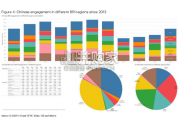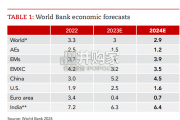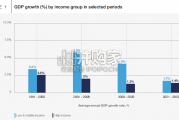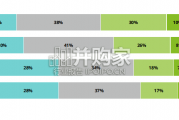China’s financing and investment spread across 61 BRI countries in 2023 (up...
2024-02-27 31 英文报告下载
There are several ways in which the BRI and AfCFTA could be linked going forward. In this paper, we appraise the potential of four options for future engagement: a ‘business-as-usual’ or ‘status-quo’, fairly uncoordinated baseline option; two types of targeted and structured approaches to trade cooperation; and a full liberalisation option, ie, an AfCFTA–China Free Trade Agreement (FTA). We use an adapted strengths, weaknesses, opportunities and threats (SWOT) framework to explore the pros and cons of each option in a consistent manner. We also incorporate the results of a gravity model of Africa–China trade as well as case studies on two sectors – manufacturing and agriculture – to explain in more literal terms the potential for innovative, strategic trade cooperation and collaboration between China and Africa. Based on this appraisal and in view of the upcoming FOCAC in 2021, we then provide recommendations for the AU, African governments, African civil society and think tanks to make one or more preferred options a reality.
Specifically, we urge all the parties to take full advantage of the synergies between the BRI and AfCFTA in new and innovative ways, while learning from past experiences and interactions with other development partners.People’s Bank of China, Chinese financial institutions have funded $440 billion-worth of infrastructure projects within the BRI countries, many of which are in Africa.1 In addition, the Refinitiv database shows that transportation (38%), power and water (23%), and oil and gas (22%) are the top three sectors in BRI projects, followed by manufacturing (9%), real estate (5%), mining (2%) and communication (1%).2 Based on a joint statement publicised at the end of the Second Belt and Road Forum in Beijing in 2019,3 and as shown in Annex I, there were seven (out of 35) highlighted economic corridors and other projects in Africa under the BRI, with almost all of them somehow linked to transport development. These economic corridors and projects4 are important ways of providing adequate infrastructure in African countries so that they can promote trade more effectively, achieve the free movement of people and ultimately develop their economies. However, while beneficial for the AfCFTA, these developments and their effects have come about in a relatively ad hoc, uncoordinated manner – particularly from the African side.

标签: 英文报告下载
相关文章

China’s financing and investment spread across 61 BRI countries in 2023 (up...
2024-02-27 31 英文报告下载

Though the risk of AI leading to catastrophe or human extinction had...
2024-02-26 51 英文报告下载

Focusing on the prospects for 2024, global growth is likely to come i...
2024-02-21 96 英文报告下载

Economic activity declined slightly on average, employment was roughly flat...
2024-02-07 67 英文报告下载

Economic growth can be defned as an increase in the quantity or quali...
2024-02-06 82 英文报告下载

In this initial quarterly survey, 41% of leaders reported their organizatio...
2024-02-05 66 英文报告下载
最新留言